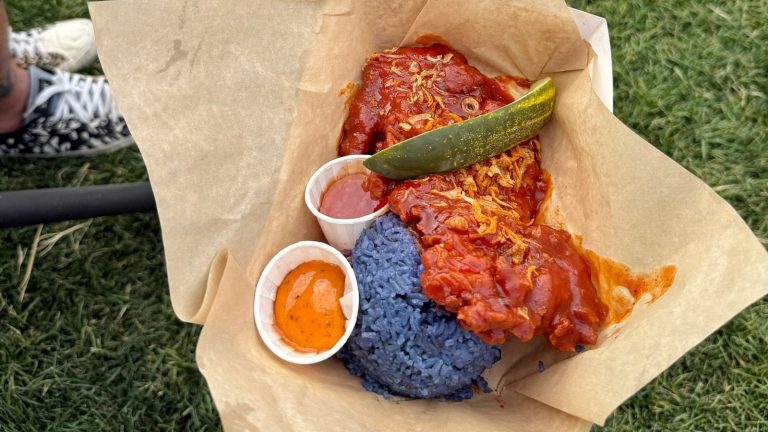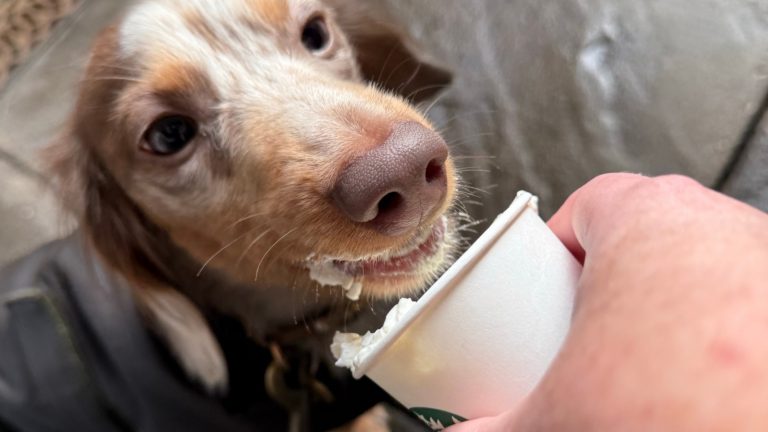The search for the best home baker in Britain started in 2010 when colorful skinny jeans were in style and avocado toast gained newfound popularity. Created by the BBC (or the British Broadcasting Corporation), “The Great British Bake Off” is a colorful, sugar-filled mecca of baking talent punctuated with quirky hosts and (sometimes) stern judges. The setting is picturesque in the English countryside on the Welford Park grounds in Berkshire, though early seasons were shot elsewhere. More famous than the specific location of the show is the great white tent where amateur bakers race against the clock to recreate classics and perfect their own creations in hopes of impressing the judges for a chance at winning their season.
Let’s quickly distinguish the difference between the show in the U.K. and when it’s aired in the U.S. The BBC show is called “The Great British Bake Off” has a total of 15 seasons (or series, as those in the U.K. call it) as of 2024. The show that appears on Netflix in the U.S. is called “The Great British Baking Show,” and started airing in 2017 — seven years after BBC —with “collection” five, which is the same season as season eight of “The Great British Baking Off.” This name discrepancy between the two productions is due to a copyright issue with Pillsbury in the U.S. For the sake of this article, we’re going to be referring to the show as the “The Great British Baking Show,” but aligning the season numbers with the original BBC production.
While the technical challenge — that is, the round where contestants have to bake without a recipe in hopes of recreating a very real dish — may be one of the most fingernail biting, the signature bake and showstopper challenges are often ones where the bakers’ talents shine. We’re diving headfirst into some of the most show-stopping desserts from challenges throughout the seasons (spoilers ahead).
Summer pudding Alaska – Nancy, Season 5
“The Great British Baking Show” has produced some top-notch personalities throughout its 15 years of airing. Nancy Birtwhistle of Lincolnshire is one of those people. Originally from Kingston upon Hull, Birtwhistle moved to Lincolnshire for work where she met her husband and after retirement dedicated herself completely to her baking craft. By then, “The Great British Baking Show” had already had several seasons under its belt, and after getting rejected from participating in season four, Birtwhistle was accepted as one of 12 contestants in season 5.
While Birtwhistle ended up winning her season of the show, we wanted to look back at an incredible piece of art she made during the fourth episode. For the showstopper bake of the episode, bakers were tasked with creating their own versions of Baked Alaska despite hot temperatures in the tent. Birtwhistle’s dessert defied the odds (unlike the “Bingate” situation in that same episode) and was filled with forest berry ice cream, strawberry and mint ice cream, vanilla parfait, and almond sponge and topped with a gorgeously stiff meringue. Not only was the taste amazing, but her presentation had artful color in both the berries and to the meringue.
Ramen illusion cake – Yan, Season 8
It’s been said that baking is a science, so who better to do it than an actual scientist? Yan Tsou joined the season 8 cast as a trained biomedical scientist working for the National Health Service — England’s healthcare system. Following her stint in the tent, she even went on to work for the esteemed Francis Crick Institute. But while in the tent, Tsou made a mark with her boundary pushing bakes and dry humor.
It’s hard to overstate how difficult baking can be at times, especially when it comes to decorating finished products to look like real life objects. During cake week of season 8, Tsou set forth to make a banana cake that visually looked like a bowl of Japanese ramen complete with all the toppings like katsu chicken, eggs, and bok choy (no kimchi though, which we always recommend with ramen). She used a combination of crispy rice cereal, fondant, and food coloring to make the dish as realistic as possible with high compliments on the presentation from the judges, though there was slight criticism on the texture of the cake itself — Paul noted the cake layers were dry.
Ginger and key lime pie – Ryan, Season 3
Hailing from Bristol, Ryan Chong hit “The Great British Baking Show” tent as a professional photographer and dad of two. Prior to photography, Chong worked in IT and finance before transitioning to more creative endeavors. While he didn’t win his season, Chong’s showing for pie week was one to remember.
Key lime pie (made from key limes, not regular limes) is a tart, tangy dessert that is balanced by the sweetness of condensed milk and the saltiness of the pie crust. It’s a dessert whose recipe is often left unaltered, but during pie week Chong chose to change the recipe with the addition of one ingredient to the result of big reactions from the judges. His key lime pie put ginger at the fore by adding it not only to the lime custard filling, but within the tart crust, as well. The judges gave it high praise for the complex taste and inspired presentation, which included rolling mounds of meringue and garnishes. Home bakers have been trying their hand at achieving the taste and clean presentation ever since.
‘Ode to the honey bee’ entremet – Sophie, Season 8
Sophie Faldo had quite a different professional career before her win on season 8 of the show, one that required a uniform quite unlike an apron. Her career as an army officer turned army reservist didn’t slow her down, leading to a domination of the tent and a winning season.
During one of the last challenges of the competition, Faldo what might be her most famous “Baking Show” creation in her ‘ode to the honey bee’ entremet. An entremet is a multilayered cake featuring mousse, glaze, and dazzling decorations. Faldo’s final dessert featured,”an orange-blossom almond sponge, a set lemon curd, a caramelized honey set custard, and finally a gelée topping made with puréed blackberries,” per “Baking Show.” Her entremet featured a chocolate bee, honeycomb, and flower atop a granite-esque mirror glaze, which further leaned into her thoughtful thematic presentation. For a less audacious version, the recipe on “The Great British Baking Show” website shares how to execute the recipe with a simpler presentation.
Fizzy pop cheesecake – Nadiya, Season 6
Nadiya Hussain’s relationship with desserts began in school thanks to a home economics teacher encouraging her ambitions. Growing up in a Bangladeshi household, Hussain wasn’t often exposed to desserts beyond the ice cream her father served at his restaurant. But that late blooming didn’t stop her from taking the competition by storm and winning season six (even though her husband was the one who applied for her). Her popularity grew so much so that Hussain was invited to bake a a three-tiered orange drizzle marmalade cake for Queen Elizabeth II’s 90th birthday.
While on the show, her fizzy pop cheesecakes made a splash during the cheesecake challenge. Each of the three tiers of cheesecake were inspired by drink flavors: ginger beer, cream soda, and lemonade. She reduced each of the liquids to create syrups that flavored the layers before stacking them atop one another in a cascade. Judge Paul Hollywood was floored by how the syrups had captured the taste of the drinks so well. On top, she put a “floating” soda can with meringue “soda” pouring out of it, that further brought to life the quirky beverage theme of the bake.
Sticky toffee apple caramel cake – Kate, Season 8
While some “Baking Show” contestants find new careers in the food industry post-show, season 8 runner-up Kate Lyon made a different kind of pivot. Despite having a career in health and safety prior to joining other contestants in the tent, Lyon opened a Bloom Baby franchise focused on childhood development. Since having her son (who inspired her to open the franchise), she’s shared that she hasn’t had as much time to bake, but that’s okay, because some of her bakes live on in “Baking Show” history — especially her sticky toffee apple caramel cake.
During caramel week, she presented the judges with a bright, flavorful cake that featured chopped dates and apple juice in the sponge layers and a toffee buttercream. Atop the multi-layered cake were colorful spun sugar “fireworks” and apples, which the judges loved, but the sponge stole the show especially, since judge Prue Leith shared during deliberations that she asked Lyon for the recipe calling it the “best tasting cake” of the episode. The presentation, while perhaps not the cleanest execution, showed real skill in sugar working with a flair for design against a rather dull, brown cake.
Duck cake – Sumayah, Season 15
Just last year, the tent was filled with the 15th round of “Baking Show” regular season competitors and Sumayah Kazi was the youngest. At only 19, Kazi — a dentistry student following her gap year break — is a self-taught baker with a passion for blending techniques and flavors. She applied to “Bake-Off” after mistakenly overlooking her dentistry school acceptance and still bakes, showing off her masterpieces on social media.
On the show, Kazi was known for truly remarkable bakes, like her biscuit ballet theater, as well as her realistic duck cake. During the first week of the season, Kazi took on the undertaking of making a lifelike cake version of her duck Pato. The cake body of Pato and the wooden stump his body sat on were made of orange sponge with an orange buttercream with balsamic strawberries folded in. Paul Hollywood called the bake “exceptional,” and both judges were fans of both the flavor and execution of the bake. If you watch the episode, you can even catch a glimpse of Pato’s photo, and his cake likeness is spot on showcasing Kazi’s incredible skill.
Shortbread Bavarian clock tower – Christine, Season 4
Season 4 contestant Christine Wallace was 66 when competing on the show, and at the time had been baking for 60 years, getting her start in the kitchen alongside her grandmother. Wallace shared that while growing up her family moved often due to her father’s position in the Air Force, and time spent with her “granny” gave her the opportunity to try her hand at baking. She’s a self proclaimed lover of baking cakes, no matter the flavor or occasion, but one of her most awe inspiring bakes on the show was actually shortbread.
During the fifth episode of the season, “Biscuits and Traybakes,” Wallace pulled out all the stops for her shortbread Bavarian clock tower. Not only was the architecture of the tower awe-inspiring due to the engineering it took, but it was made of four different flavors of shortbread, including orange and cardamom as well as chocolate. Stacked atop one another, the clock tower was complete with a shortbread clock face, buttercream icing “snow,” and several evergreen trees.
Flapper girl custards – David, Season 10
As with many other contestants, season 10 winner David Atherton got the baking bug from watching his mom who inspired him to start. As he grew up and traveled abroad — he notes Malawi as a particular influence — he began experimenting with different ways of baking. Since winning his season of the show, Atherton has released several cookbooks and hosts a podcast with fellow contestant Michael Chakraverty.
Season 10 featured “Roaring ’20s Week,” with the signature challenge being four custard pies. Atherton chose to go with a simple, straightforward flavor in vanilla custard but livened the presentation up with artfully decorated flapper girl cookies and an assortment of fruit. Paul Hollywood likened them to what one might find in a French patisserie and, after tasting, gave Atherton one of his coveted handshakes.For those unaware, the “Hollywood Handshake” is a means of expressing ultimate praise to a baker for their performance at a specific challenge.
Midsummer Night’s Dream cake – Frances, Season 4
What made season 4 winner Frances Quinn’s bakes so special? It could be her design background and the keen eye that training gave her in bringing together shape and color. On her website, Quinn shares how working in textiles helped hone her process, and that her passions for design and baking have always lived in harmony, not in competition to one another. But that eye for design sometimes got her into trouble on the show, particularly with the judges who sometimes critiqued her bakes for prioritizing looks over taste. In the tent, both matter.
For her last bake, she was able to bring the two together in a dazzling way that pleased the judges. Her “Midsummer Night’s Dream” cake was three tiered and covered in an array of flowers and fruits that harkened back to the dreamy setting of Shakespeare’s famous play. Quinn purposefully chose three tiers for the three plots that bloom throughout the play with flavors like ginger, lemon drizzle, and carrot and pineapple. The harmony of dried fruit flowers with the romantic color palette made for a striking, rustic cake.
Gingerbread pub – Candice, Season 7
Growing up in North London, season seven winner Candice Brown learned the joys of baking from her mother and grandmother while also spending time in the pub her family ran. The pub that, incidentally, inspired Candice’s most famous “Baking Show” bake. The 16th century King William IV pub is settled in Kempston, a town in Bedford, England. While Brown’s parents no longer manage the pub, her gingerbread recreation of the structure was a hit with the current managers who even offered free gingerbread men to patrons who brought in a copy of the Sunday Express to the pub.
During biscuit week, contestants were challenged with erecting a 30 centimeter structure that featured eight characters and said something about the baker. For Brown, the King William IV pub made perfect sense and she used three types of gingerbread to make the “sticky pub floor,” pool table, and host of characters within the scene. While the execution isn’t necessarily what makes this bake stand out, it’s the story behind it and the construction of the entire scene that makes it so recognizable even today.
Turtle galaxy – Kim-Joy, Season 9
Kim-Joy Hewlett — also known as just Kim-Joy — was known on the “Baking Show” for her quirky bakes that brought whimsy and lightheartedness to the tent with her monster meringues (complete with candy eyeballs) and orange cat madeleines with whisker decorations. It’s that ingenuity that got her to the final, though she lost to fellow baker Rahul Mandal.
For the showstopper challenge during dessert week, bakers were asked to make a melting chocolate ball dessert. This is done by pouring melted chocolate into a circular mold for it to set. For the bakers in the tent, it also happened to be an extremely hot day, which is a major hurdle in baking where chocolate is concerned and a constant battle for contestants. Kim-Joy persevered and impressed the judges with the reveal of her many choux turtles (dubbing them “space turtles”) that were the shareable dessert filling of her galaxy themed chocolate ball complete with drawn on faces.
Monster custard tarts – Helena, Season 10
A self-proclaimed witch, Helena Garcia of season 10 fame grew up around the world being born in North Africa, raised in Spain, and experiencing life in the United States in Las Vegas. While in the U.S., she began baking and using those skills to create spooky, mystical Halloween-inspired desserts, which she brought into the tent. Post “Baking Show,” Helena even published a cookbook dedicated to witchy food, including recipes for maple bat cookies and chocolate spider web buns.
While on the show, Garcia made many an interesting bake, but her monster custard tarts during “Roaring ’20s Week” — yes, the same week that season winner David made his flapper girl custards — take the proverbial cake. The mythical sea monster’s legs and head emerged from a meringue sea foam atop the lavender and lemon custard. If you were confused by her choice, you aren’t the only one. Judge Prue Leith did beg the question, “is this remotely 1920’s?” and while they ended up appreciating the design, the critiques noted that the dessert leaned too heavily into the lavender flavor. Despite this criticism, it goes down as another memorable bake from a contestant that wasn’t afraid to push boundaries on the show.
Swan marchpane cake – Jane, Season 7
Did you know that the Crown in the United Kingdom owns all unmarked mute swans in open waters? Dating back to the 12th century (the High Middle Ages when the Tudors reigned), the Crown has retained the ownership of in large part due to the fact that back then, swans were a food source, one reserved for the wealthy.
So for Tudor week, Jane Beedle chose to make a swan-themed marchpane cake. Beedle’s resulting cake featured delicate decorations of swans and roses — a means of remembering the “War of the Roses.” Classically beautiful in aesthetic, the bake also felt decidedly special due to its historical references that resulted in more of an art piece than a dessert. Alongside her other bakes of the episode, the marchpane cake was enough to get her to the final four, though in the end she didn’t win her season.





